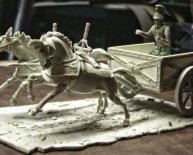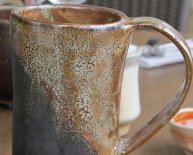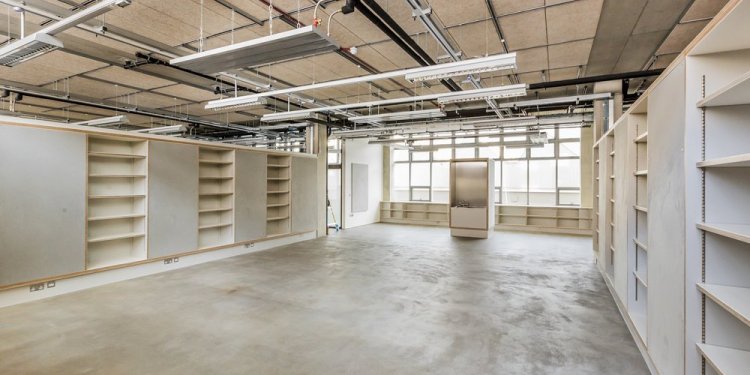
Building Ceramics
 Are you sure you wish to continue?
Are you sure you wish to continue?
Ceramics: The building blocks of construction
Ceramic products like floor, wall and roofing tile, cement, brick, gypsum, sewer pipe, and glass are a major part of the multi-billion dollar construction industry. Approximately three billion square feet of glass is produced each year to make various types of windows, which is enough to build a 200-foot wide glass highway stretching from New York to Los Angeles. Additionally, glass fibers are used for insulation, ceiling panels and roofing shingles to protect humans from the elements.
Ceramic tile is used in applications such as flooring, walls, countertops, and fireplaces. Tile also is a very durable and hygienic construction product that adds beauty to any application. Bathrooms are furnished with sanitaryware (toilets, sinks, and sometimes bathtubs) that are made of a similar material to that of some tile.
Clay brick withstands hurricanes
Clay brick is used to build homes and commercial buildings because of its strength, durability, and beauty. Brick is the only building product that will not burn, melt, dent, peel, warp, rot, rust or be eaten by termites. A new study by the Brick Industry Association also shows that homes built with brick offer dramatically more protection from wind-blown debris than homes built with vinyl or fiber-cement siding. The study demonstrated that a medium-sized wind-blown object, such as a 7.5-foot long 2 x 4, would penetrate homes built with vinyl or fiber-cement siding at a speed of 25 miles per hour (mph).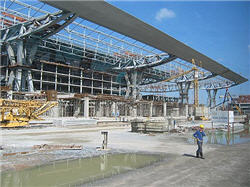 By comparison, the same object would need to travel at a speed exceeding 80 mph in order to penetrate the wall of a brick home
By comparison, the same object would need to travel at a speed exceeding 80 mph in order to penetrate the wall of a brick home
In a test that simulated wind-blown debris traveling at a speed of 34 mph, the 2 x 4 bounced off the brick veneer with no damage to the interior wall. When the same test was conducted on a vinyl or fiber-cement sided wall, the 2 x 4 easily penetrated the wall, with more than five feet of the timber passing through the interior wall. The test was representative of weather that would generate wind speeds of between 100 and 140 mph.
The test also found that homes made with brick exceed the 34 mph impact resistance requirement for high velocity hurricane zones in the Florida building code. Brick also exceeds Florida’s impact resistance requirements for essential facilities in hurricane areas.
Smart windows control light and heat
Windows have become more intelligent with the help of ceramic particles. Called suspended particle device technology, a patented technology developed and licensed by Research Frontiers Incorporated, it allows users to control the amount of light, glare and heat passing through glass or plastic products such as windows, skylights, doors, sunroofs, visors, eyewear and more.
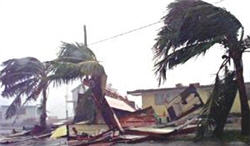 Suspended particle devices, more commonly known as “SPDs” or “light valves, ” use a film within which droplets of liquid suspension are distributed. Light-absorbing microscopic particles are dispersed within the liquid suspension. These randomly oriented microscopic particles are typically made of a black ceramic pigment (chromium iron oxide, copper chromium oxide, or bismuth manganese oxide). These particles are capable of reflecting heat, especially near-infrared radiation.
Suspended particle devices, more commonly known as “SPDs” or “light valves, ” use a film within which droplets of liquid suspension are distributed. Light-absorbing microscopic particles are dispersed within the liquid suspension. These randomly oriented microscopic particles are typically made of a black ceramic pigment (chromium iron oxide, copper chromium oxide, or bismuth manganese oxide). These particles are capable of reflecting heat, especially near-infrared radiation.
The film is then enclosed between two glass or plastic plates coated with a transparent conductive material. When no electrical voltage is present, the particles absorb light and block it from passing through the film. When an electrical voltage is applied, the particles align so that light can pass through. By regulating the voltage with a simple switch or other control device, users instantly regulate the amount of light, glare and heat coming through products such as windows. This gives users a range of transparency where light transmission can be rapidly varied depending upon the amount of voltage applied.
Clay roofing tile saves energy
Working with the Oak Ridge National Laboratory, the Tile Roofing Institute reports that tile roofing’s mass, reflectivity and ventilation beneath the tiles contribute to a reduction of heat transference of at least 50%, when compared to a traditional asphalt shingle roof. Coated clay tiles can cut the transfer of heat by up to 70%. Tile roofing is very fire resistant and also very durable, withstanding harsh weather conditions like high winds, snow, hail and even earthquakes. In fact, tile roofs have lasted for centuries, thus making them also very economical.
Back to Previous PageTags:
Brick Industry Association, ceramic construction, ceramic engineering, ceramic pigment, ceramic tile, clay brick, clay bricks, clay roofing, coated clay tiles, Oak Ridge National Laboratory, ORNL, Research Frontiers, SPD, suspended particle device, Tile Roofing Institute

